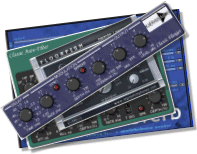
Vst Plugins For Adobe Audition Cs6 Torrent
Freeware: Audio Production: Plug-ins & effects: VST. AXYs by B.Serrano. MIDI CC XY pad controler. B.Serrano AXYs Plug-ins & effects, VST.
What's covered • Support policy • VST plug-in handling • Troubleshooting steps Support policy Effects plug-in support is limited to plug-ins that are included with the Adobe Audition CC installation and the VST and Audio Units technologies as they are implemented within the application. Adobe technical support does not support problems due to the use of third-party plug-ins. If a third-party plug-in directly causes problems, please contact the plug-in manufacturer for support.
VST plug-in handling Adobe Audition supports third-party 64-bit audio plug-ins in VST 2.4, VST 3.0 formats for macOS and Windows, and Audio Units for macOS. Obrazci pechatej cdr. Note: VSTi and virtual instrument synthesis plug-ins are not supported at this time. To locate plug-ins or manage their visibility in the application, use the Audition Audio Plug-In Manager. From the Audition menu bar, select Effects > Audio Plug-In Manager. Here, you can add new folders if you’ve installed VST plugins to custom locations, Scan for new plug-ins, or manage which audio plug-ins are available inside the application.
Tux paint zadaniya. Tux Paint is a free, award-winning drawing program for children ages 3 to 12 (for example, preschool and K-6). Tux Paint is used in schools around the world as a computer literacy drawing activity.
VST 2.4 plug-ins typically get installed to Windows: C: Program Files Steinberg vstplugins macOS: /Library/Audio/Plug-Ins/VST/ VST 3.0 plug-ins are strictly installed to Windows: C: Program Files Common Files VST3 macOS: /Library/Audio/Plug-Ins/VST/ Audio Units plug-ins are strictly installed to the path below, and are registered with the OS: macOS: /Library/Audio/Plug-Ins/Components You should only need to add folders if you have installed VST 2.4 plug-ins to a custom location. Otherwise, Audition would populate the folders list with the default locations. Click the Scan for Plug-Ins button to search for new plug-ins on the system. Audition will display the name, type, status, and path of each discovered or installed plug-in. Use the checkbox column to enable or disable plug-ins. Note: Audition will scan and attempt to open each plug-in in a separate process.
Plug-Ins which cause a crash, or are virtual instruments, will be marked as disabled. After plug-ins have been scanned, they are available in the Effects menu. Near the bottom of the menu dropdown are 3 items: VST, VST3, and AU. VST: Contains VST 2.4 plug-ins which are organized by manufacturer.
For instance, all plug-ins by iZotope will be in a flyout submenu labeled “iZotope” VST3: Contains VST 3.0 plug-ins which are organized via their internal metadata. For instance, noise reduction plug-ins might be in a flyout submenu labeled “Restoration” AU: Contains Audio Units plug-ins (macOS only) which are organized by manufacturer. For instance, all plug-ins that ship with macOS are in a flyout submenu labeled “Apple” Troubleshooting steps To benefit most from this document, perform the tasks in this section in order.
Keep track of the tasks that you perform and the results of each, including errors and other problems. Adobe Technical Support can use this information to better assist you if you need to call.
Note: The procedures in this document are based on the default interface of Windows XP. If the interface is customized, some procedures may vary.
For example, a commonly encountered difference is the navigation to Control Panel from the Start menu: You may navigate Start > Settings > Control Panel instead of Start > Control Panel. Restart Adobe Audition and deselect the plug-in from the VST plug-in manager. Stability issues can arise if a plug-in fails to initialize properly. The Audio Plug-in Manager lists all the plug-ins that Adobe Audition has scanned and allows you to turn each plug-in on or off.